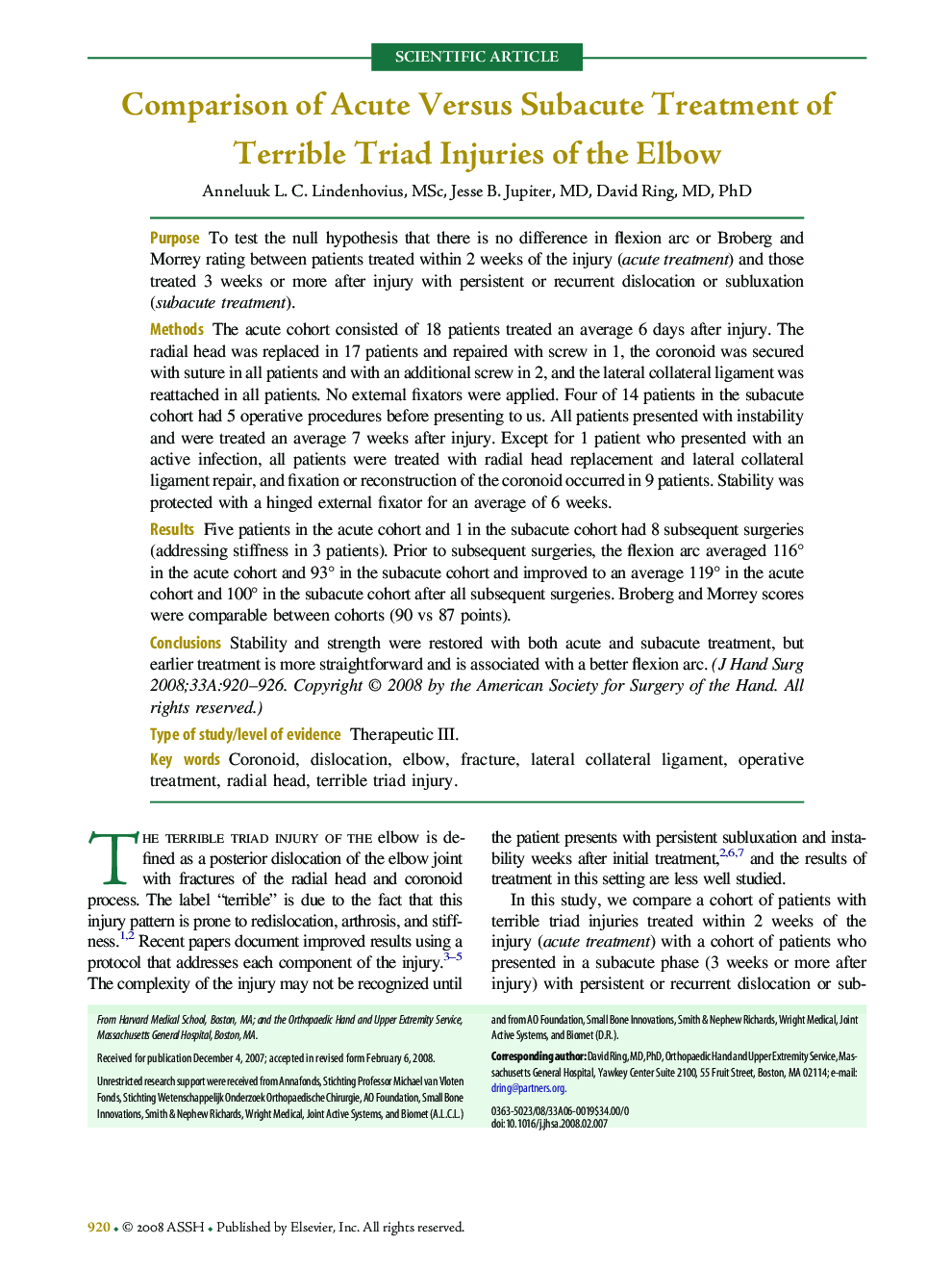| Article ID | Journal | Published Year | Pages | File Type |
|---|---|---|---|---|
| 4068462 | The Journal of Hand Surgery | 2008 | 7 Pages |
PurposeTo test the null hypothesis that there is no difference in flexion arc or Broberg and Morrey rating between patients treated within 2 weeks of the injury (acute treatment) and those treated 3 weeks or more after injury with persistent or recurrent dislocation or subluxation (subacute treatment).MethodsThe acute cohort consisted of 18 patients treated an average 6 days after injury. The radial head was replaced in 17 patients and repaired with screw in 1, the coronoid was secured with suture in all patients and with an additional screw in 2, and the lateral collateral ligament was reattached in all patients. No external fixators were applied. Four of 14 patients in the subacute cohort had 5 operative procedures before presenting to us. All patients presented with instability and were treated an average 7 weeks after injury. Except for 1 patient who presented with an active infection, all patients were treated with radial head replacement and lateral collateral ligament repair, and fixation or reconstruction of the coronoid occurred in 9 patients. Stability was protected with a hinged external fixator for an average of 6 weeks.ResultsFive patients in the acute cohort and 1 in the subacute cohort had 8 subsequent surgeries (addressing stiffness in 3 patients). Prior to subsequent surgeries, the flexion arc averaged 116° in the acute cohort and 93° in the subacute cohort and improved to an average 119° in the acute cohort and 100° in the subacute cohort after all subsequent surgeries. Broberg and Morrey scores were comparable between cohorts (90 vs 87 points).ConclusionsStability and strength were restored with both acute and subacute treatment, but earlier treatment is more straightforward and is associated with a better flexion arc.Type of study/level of evidenceTherapeutic III.
